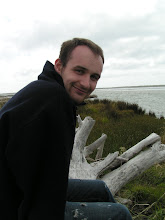First, an apology. My writing style is not normally so poor. As well as being a published scientist, I've worked as a language teacher for the last year, and I also have a sideline in proofreading manuscripts. I know how to write in a concise, erudite manner - I'm just not doing it here. Yet.
The reason is simply one of economy of words. To understand everything I want to talk about here, a huge amount of background is required. Were I to go through everything fully and completely, you'd still be reading the background material long after I've moved to Sendai. I want to cover it quickly, and get onto a more day-to-day feel to my blog.
Sakuras
Sakura festivals are very popular in Japan. Sakura is the Japanese word for the cherry blossum. Every March through May people in different parts of Japan (first in the South, where the blossums open first, then progressively further North to Hokkaido last) troop down to the park with a picnic and (normally) copious amounts of alcohol. They proceed to "view" the sakura, or as we'd say in Scotland "get tanked up".
On Friday, I visited Kyoto. Kyoto is, as all Japanese will tell you, a beautiful place. My old digital camera suffered a cruel and unusual fate recently, so I decided to purchase its replacement, a Pentax Optio S10, which I'd thoroughly recommend. Even an idiot schmuck like me can produce reasonable images very easily, and the night mode is really good. At a whopping 10 megapixels the images are really good, but require cropping for use on a blog, for example.
Kyoto used to be the Japanese capital until the Meiji restoration, where the Emperor wrestled command of Japan and her armies from the Shogunate, or military leaders. Upon reasserting his control of Japan, Meiji moved the capital of Japan to Edo, what we now call Tokyo.
Kyoto used to be the Japanese capital until the Meiji restoration, where the Emperor wrestled command of Japan and her armies from the Shogunate, or military leaders. Upon reasserting his control of Japan, Meiji moved the capital of Japan to Edo, what we now call Tokyo.
Kyoto in many respects was lucky. It was the initial choice for the dropping of the bomb in WWII. Kyoto was regarded by the US military leadership as an intellectual capital, where the inhabitants would be able to most fully understand the implications of the bomb. Likewise, Kyoto was judged to be "just the right size" [for complete destruction]. Of course, a major reason for dropping the bomb, not publicly stated, but privately held by the military leadership was a demonstration of power against Russia. Kyoto escaped thanks to a last minute reprieve by the Secretary of War, who realised that the destruction of Kyoto would be the greatest psychological blow to the Japanese, and would lead only to continued animosity with the West, rather than facilitating peace.
And Sayonaras
And this weekend has been a hard one. Emotional, even. I have many private students, and for many this has been their last lessons with me. I plan to talk about them all, over time, but I'll go through one at a time. Today, I'm going to talk about Keizo Uno.
Keizo is one of my favourite students. Of course, I really like all my students, but I've always enjoyed teaching Keizo. Of course, I say "teach", but I've never really tried to teach Keizo. We hang out and have lunch. His wife (below) is an excellent cook! When I first met Keizo he'd been studying English for about a year under another teacher. The other teacher had used the workbook approach which I shun so heavily. Language is dynamic, and learning it is about the experience. Keizo has come a long way, from single words to relatively complex conversations with me in the last 5 months. Keizo's kids are pretty cool too - Hiroki always has a question for me at the end of the lesson, and Kazuki has been endeavouring to teach me kanji and magic! I'll miss these guys.







No comments:
Post a Comment